Squashes Will Benefit From Some Sort Of Support – Try Trellis, Fencing Or Pergolas

FRUIT > SQUASH > SUPPORT

Elizabeth is a Permaculture Garden Designer, Sustainability Consultant and Professional Writer, working as an advocate for positive change. She graduated from the University of St. Andrews with an MA in English and Philosophy and obtained a Diploma in Applied Permaculture Design from the Permaculture Association.
Reviewed By PETER LICKORISH

Peter is a Horticulture Lecturer and self-employed Horticulturist, with a passion for diverse areas of the industry - from garden design to the science behind plant growth and propagation. He has completed the Royal Horticultural Society’s Master of Horticulture (MHort) Award and lectures on RHS courses at Bedford College.
Contributions From EMILY CUPIT

Emily is a Gardening Writer, Photographer and Videographer from Derbyshire, UK. She is the Founder of Emily's Green Diary - a community of more than 75,000 people who share in her gardening journey.
IN THIS GUIDE
SQUASH GUIDES
Planting
Support
Squash can be useful plants to grow in your garden, and there are both tender summer squash and winter squash to consider.
Some squashes take up much less space and are less vigorous than others, but many squashes will benefit from some sort of support.
Whether or not support is essential for your squash will depend on which type and variety you are growing and also on where they are grown.
“Squash are great plants to grow, even in smaller spaces, as they can be grown vertically and trailed up netting, trellis or bamboo canes and can save on ground space,” says Gardener Hannah Reid.
“They store so well, for months and months too.”
Some squashes do not grow as long vining plants, while others can sprawl out or climb a long way.
When choosing a variety, it is important to determine its growth habits and the eventual size to which you can expect it to grow.
However, even those that do not strictly require support can benefit from it, so it is often something to consider.
Why Support Squash?
Squash can often take up a lot of space, but by choosing the right support for the type of squash you are growing, you can encourage the plants to grow vertically rather than horizontally.
This means that you can reduce the amount of space they require, and make the most of the space available to you in your garden.
“A sturdy squash support can be a good way to deal with any broad woody stems that are around 1.5m or longer,” says Master Horticulturist Peter Lickorish.
“They can be driven into the ground, creating a tepee shape, and plants will generally scramble up these. “
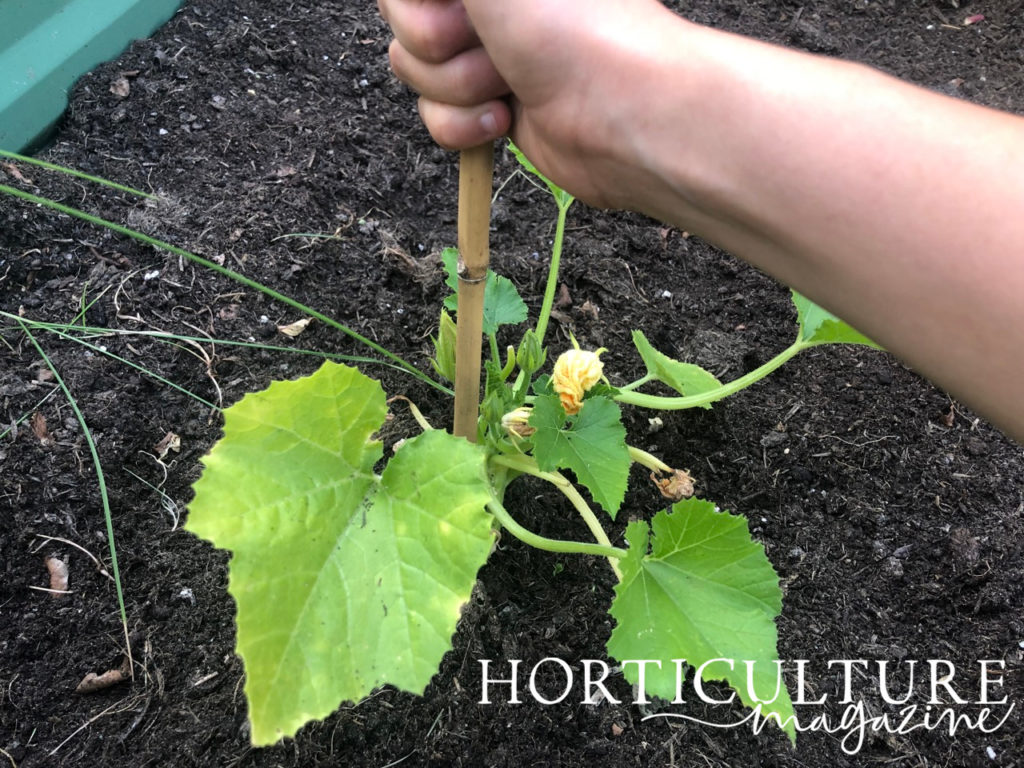
Another reason why it can be a good idea to grow squash vertically up supports rather than letting them trail across the ground is that this means that the fruits will be elevated above the soil.
This helps prevent the fruit from becoming deformed or rotting, or having disease problems, and can make it easier for them to have access to light and ripen successfully.
Support Options
Squashes are large and often heavy plants, so when thinking about support options, it is important to bear this in mind.
Some support options for other climbing or vining plants will not necessarily be strong enough to support these hefty plants, especially once fruits begin to form.
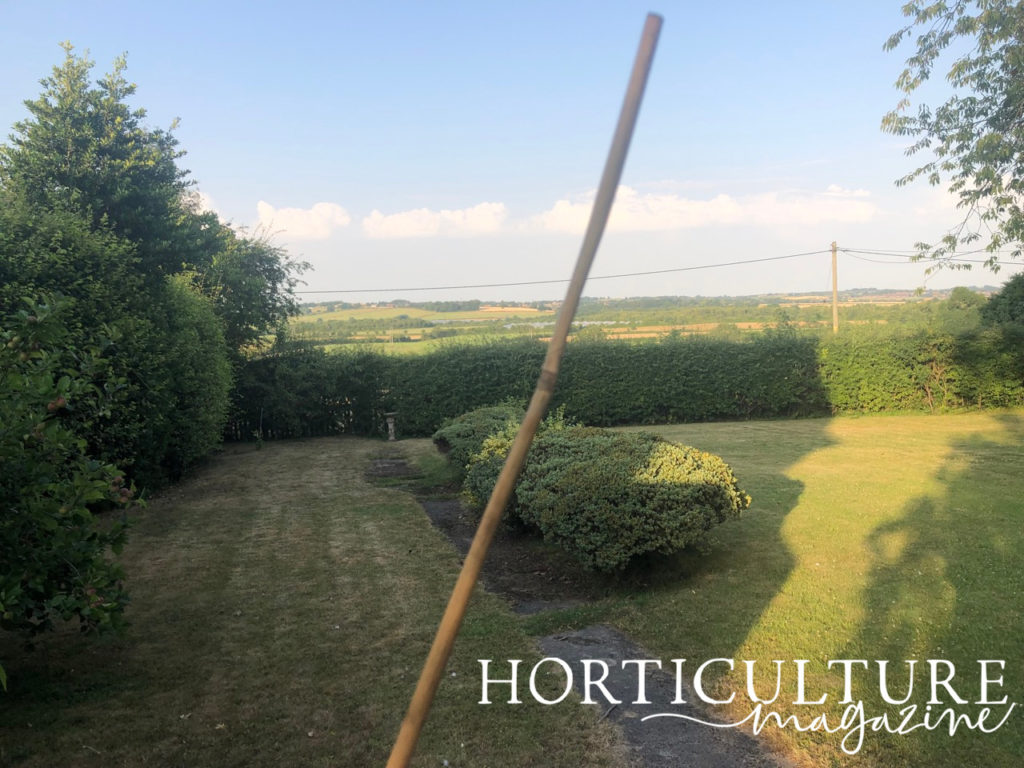
Here are some support options that, depending on the type of squash you are growing, you might consider:
Pergolas
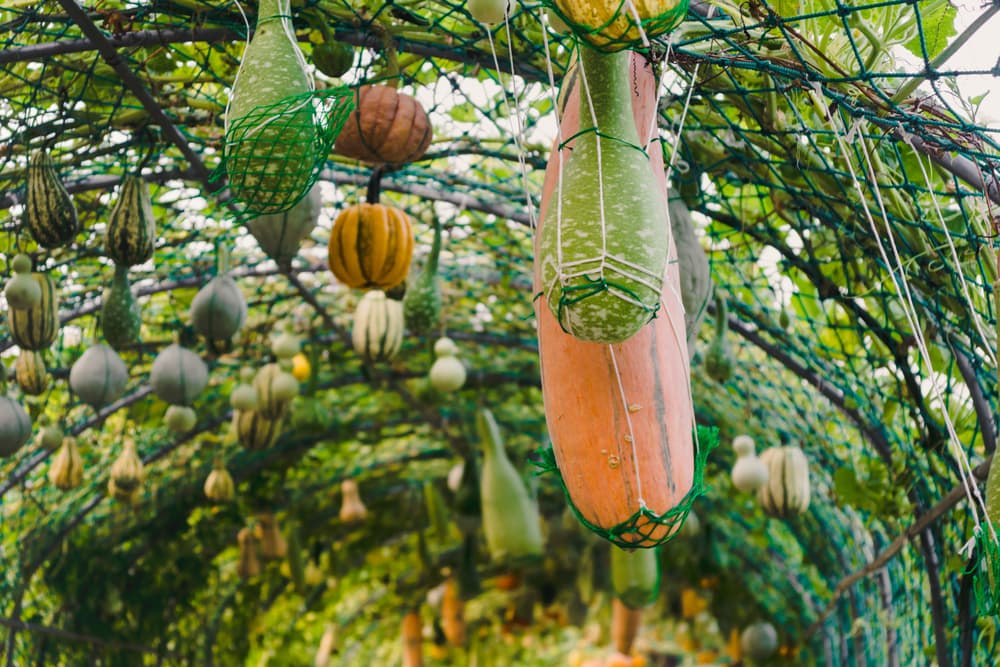
Squash might sometimes be planted alongside a pergola and trained to climb up this structure on its southern, sunny side.
Walls Or Fences
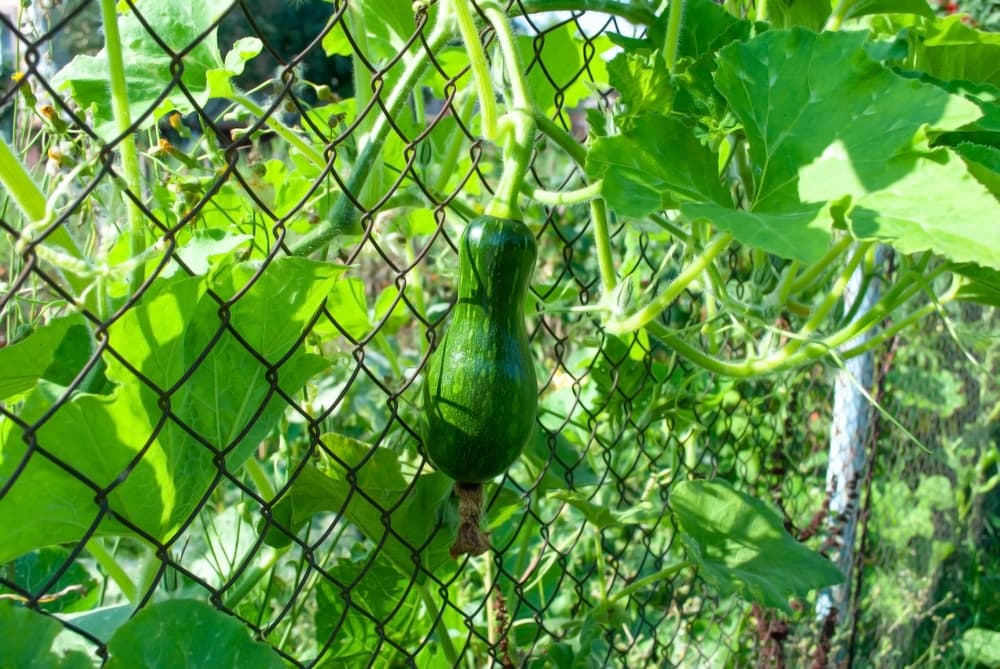
You might also create sturdy support wires along a south-facing wall or fence up which squash and other vertically climbing plants might be grown.
Trellis Supports
If you do not already have a suitable structure for squash to use as support as they grow, then there are various different trellises that you might create.
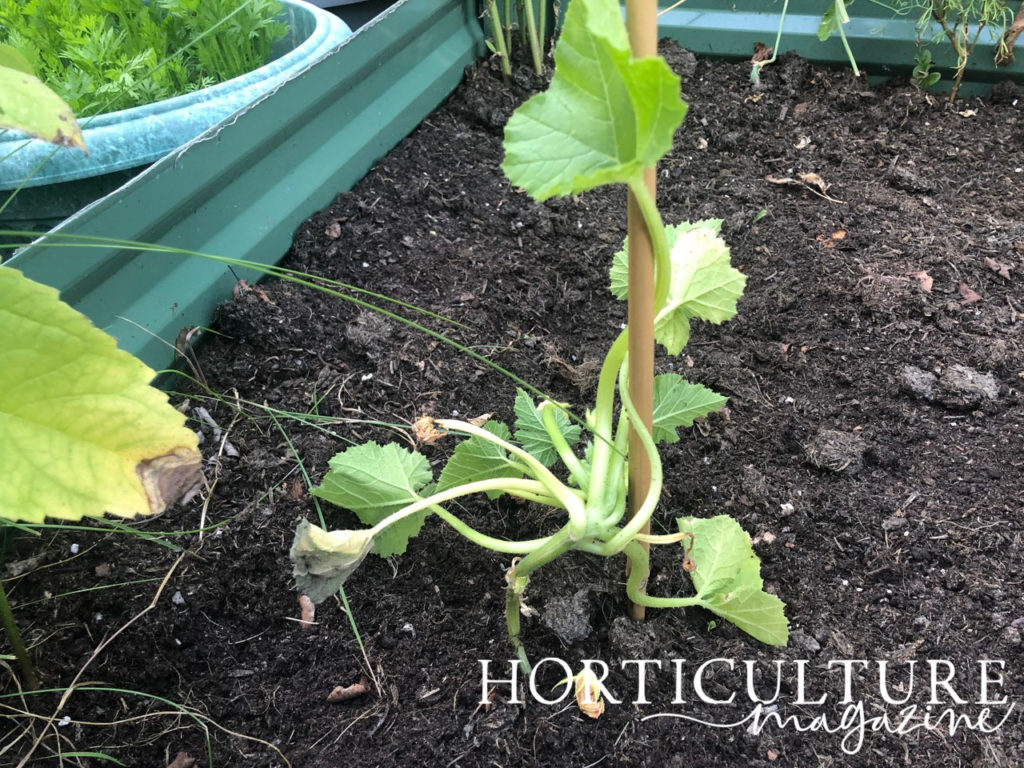
For example, you might make:
- Vertical structures affixed into the ground.
- Sturdy A-frame structures.
- V-shaped structures.
- A sturdy archway trellis.
- Propped ramp-type supports.
“Small pieces of netting or old cloths, which will flex with a growing squash, can be tied to uprights to create mini hammocks,” adds Peter.
“These support individual fruits on larger-fruiting varieties.”
And these are just a few ideas.
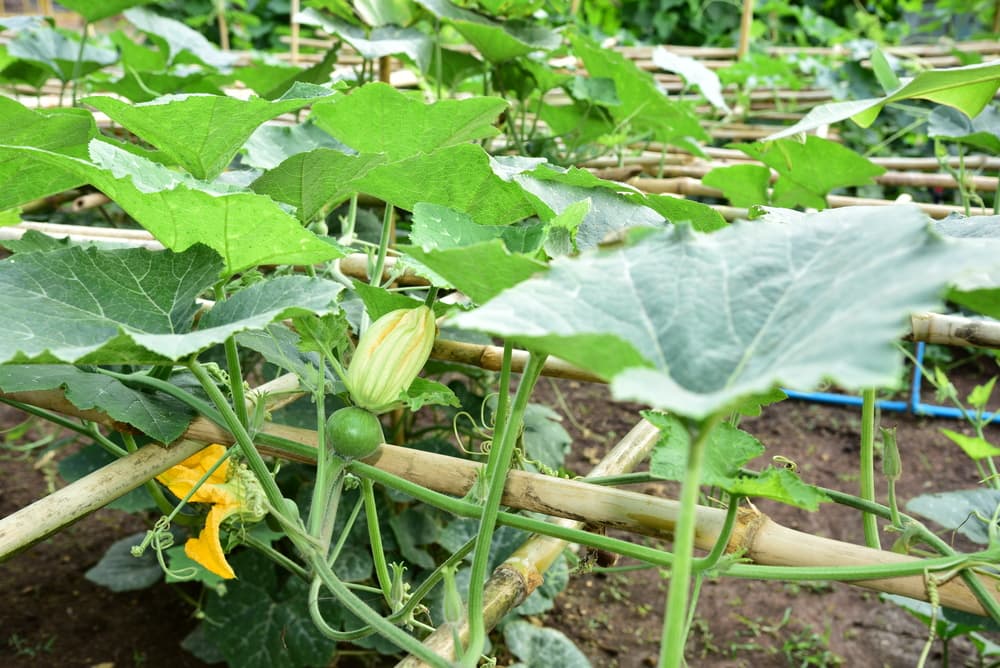
Remember, you might not have to buy a trellis, as there are plenty of ways to make your own from reclaimed, natural or up-cycled materials.

